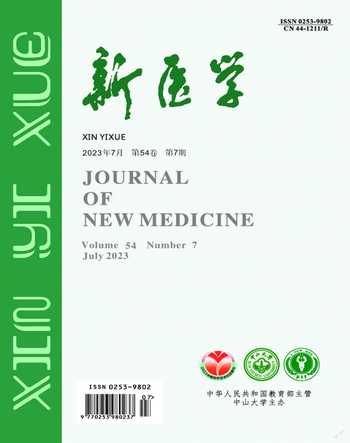67名健康兒童供者造血干細胞動員及采集效果分析
吳梅青?陳英華?劉燕曄?李智?劉練金?施玲玲?章忠明



【摘要】目的 分析健康兒童供者的造血干細胞動員和采集效果。方法 67名健康兒童供者納入研究,根據供/受者體重比值(供/受BWR)分為供/受BWR<1組(24例)、供/受BWR1~2組(29例)和供/受BWR>2組(14例),在各組間比較骨髓和外周血干細胞動員、采集效果、不良反應等情況。結果 供/受BWR<1的供者采集的骨髓干細胞單個核細胞數(MNC)明顯低于供/受BWR1~2組和供/受BWR>2組(P均<0.001),而3組間骨髓CD34+細胞數比較差異無統計學意義(P > 0.05)。供/受BWR>2組的外周血干細胞MNC明顯高于供/受BWR<1組和供/受BWR1~2組(P < 0.05),且供/受BWR>2組的外周血干細胞CD34+細胞數明顯高于供/受BWR<1組(P = 0.032)。健康兒童供者動員和采集干細胞過程中不良反應可耐受,所采集的骨髓和外周血干細胞均能滿足移植需求,隨訪其相應受者無植入不良發生。結論 健康兒童作為供者進行造血干細胞采集效果良好,采集過程安全可行。盡管低供/受BWR供者采集的干細胞比高供/受BWR供者低,但所采集的干細胞均能滿足移植需求。
【關鍵詞】兒童供者;造血干細胞動員;造血干細胞采集;安全性
Analysis of effect of hematopoietic stem cell mobilization and collection in 67 healthy pediatric donors Wu Meiqing, Chen Yinghua, Liu Yanye, Li Zhi, Liu Lianjin, Shi Lingling, Zhang Zhongming. Department of Hematology, the First Affiliated Hospital of Guangxi Medical University, Nanning 530021, China
Corresponding author, Zhang Zhongming, E-mail: zzmmissyou@126.com
【Abstract】Objective To evaluate the effect of hematopoietic stem cell mobilization and collection in healthy pediatric donors. Methods 67 healthy pediatric donors were included in this study.According to the donor/recipient (D/R) body weight ratio (BWR), they were divided into three groups: D/R BWR<1 group(n = 24), D/R BWR 1-2 group(n = 29), and D/R BWR>2 group
(n = 14). The mobilization, collection effect and adverse reactions of bone marrow and peripheral blood stem cells were compared among all groups. Results The quantity of mononuclear cells (MNCs) of bone marrow stem cells collected in the D/R BWR<1 group was significantly lower than those in the D/R BWR 1-2 and D/R BWR>2 group (both P < 0.001). There was no significant difference in the quantity of bone marrow CD34+ cells among three groups (all P > 0.05). The quantity of MNCs of peripheral blood stem cells in the D/R BWR>2 group was significantly higher than those in the D/R BWR<1 and D/R BWR 1-2 group (both P < 0.05), and the quantity of CD34+ cells of peripheral blood stem cells in the D/R BWR>2 group was significantly higher than that in the D/R BWR<1 group (P = 0.032). Adverse reactions were tolerated in all donors during stem cell mobilization and collection. The bone marrow and peripheral blood stem cells collected from pediatric donors could meet the transplantation needs. No poor implantation or implantation failure occurred in the related recipients during follow-up. Conclusions Hematopoietic stem cell collection from healthy pediatric donors is effective and safe. Although the quantity of stem cells collected in low D/R BWR is less compared to that in the high D/R BWR, the collected stem cells can meet the transplantation needs.
【Key words】Pediatric donor; Hematopoietic stem cell mobilization; Hematopoietic stem cell collection; Safety
異基因造血干細胞移植是目前治療血液系統疾病和遺傳性疾病的有效手段之一[1-3]。在重型地中海貧血(地貧)患者移植中,親緣健康同胞通常是作為首選的供者[4]。近年來,隨著單倍體移植技術的不斷提高,在惡性血液病移植中,子女作為供者選擇也日益增加[5]。采集足夠的供者干細胞是保障造血干細胞移植成功的基本條件[6]。臨床實踐表明大體重兒童供者采集的干細胞通常能滿足低體重受者的移植需求,而低體重供者采集的干細胞是否能滿足大體重兒童或成人受者的移植需求則備受關注[7]。為評估健康兒童干細胞動員及采集效果,現將廣西醫科大學第一附屬醫院67例兒童供者的資料總結分析如下。
資料與方法
一、研究對象
2021年1月至2022年8月在本院提供造血干細胞且年齡≤14歲的健康兒童供者納入研究。根據供/受者體重比值(供/受BWR)分為3組:供/
受BWR<1組、供/受BWR1~2組、供/受BWR > 2組。所有兒童供者的父母或監護人均簽署知情同意書。本研究及流程已通過醫院醫學倫理委員會批準(批號:2023-E069-01) 。
二、方 法
比較各組間骨髓和外周血干細胞動員、采集效果、不良反應發生情況。
1.供者采集前準備
供者在干細胞動員和采集前完善各種相關檢查:包括血常規、尿常規、糞便常規、血液生化(肝功能、腎功能、電解質、心肌酶譜等)、輸血前相關檢查(乙型肝炎兩對半、丙型肝炎抗體、梅毒螺旋體特異性抗體、HIV抗體)、血型鑒定(ABO血型+RhD血型)、病毒相關檢測(EB病毒核酸、巨細胞病毒核酸)、心電圖、胸部影像學等相關檢測。受者為重型地貧時,供者行地貧基因檢測。
2.造血干細胞動員
采用重組人粒細胞集落刺激因子(G-CSF)5~10 μg/(kg·d)皮下注射,監測外周血細胞變化,動員第4日檢測外周血CD34+細胞比例。
3.骨髓干細胞采集
體重≥30 kg的供者于動員前分次采集保存自體血,體重< 30 kg的供者根據采骨髓量(10~
20 mL/kg)于采集前配同型紅細胞2~4 U備用。G-CSF動員第4日供者行骨髓干細胞采集術,手術過程嚴格無菌操作,術中回輸預存的自體血或異體血、監測生命征,術后復查血常規、凝血功能、電解質等。
4.外周血造血干細胞采集
于動員第5日行外周血干細胞采集,外周血干細胞采集前評估供者血管情況,血管條件不佳者行股靜脈置管。體重≤20 kg的供者,使用同型紅細胞1 U預充管路后再行外周血干細胞分離。在采集前口服鈣劑,采集過程中給予靜滴葡萄糖酸鈣預防低鈣血癥。干細胞產品經手工計數獲取單個核細胞數(MNC),經流式細胞儀檢測CD34+細胞數。當采集MNC或CD34+細胞數量不足時,且供者身體條件耐受情況下于動員第6日行第2次外周血干細胞采集。
5.記錄干細胞動員及采集不良反應
在G-CSF動員期間、干細胞采集過程中分別記錄供者出現的不良反應、持續時間、緩解方式等。干細胞采集1周后復查血常規,術后對供者的生長發育、身體健康狀況、生活質量等進行長期隨訪。
三、統計學處理
采用SPSS 23.0統計軟件進行數據分析,符合正態分布的計量資料以描述,多組間比較采用方差分析,兩兩比較采用LSD法進行統計學分析。計數資料用頻數(%)表示,比較采用χ2檢驗或Fisher確切概率法。P < 0.05為差異有統計學意義。
結果
一、一般人口學特征
67名兒童供者納入本研究,其中男30名、女37名,年齡(8.87±3.94)名,體重(31.33±14.26)kg。
供受者間均為親緣關系,同胞之間59名、子女供父母8名,采集成功率為100%。供受者一般人口學特征見表1。
二、干細胞采集日供者外周血細胞檢測
供者在干細胞采集當日的外周血白細胞、血紅蛋白、血小板在3組不同供/受BWR組間比較差異均無統計學意義(P均 > 0.05)。供/受BWR 1~2組外周血CD34+細胞絕對值明顯高于供/受BWR>2組(95%CI 18.961~83.798,P = 0.003)。見表2。
三、不同供/受BWR骨髓和外周血干細胞采集情況比較
67例供者中53例在動員第4日采集骨髓,所有供者均在動員第5日采集外周血干細胞,9名供者因采集MNC總數或CD34+細胞數量不足在動員第6日繼續采集外周血干細胞。采集的干細胞產品MNC為(12.97±4.71)×108/ kg,CD34+細胞為
(11.51±5.05)×106/ kg。供/受BWR<1組行2次外周血干細胞采集的比例(29.2%,7/24)明顯高于供/受BWR > 2組(0%,0/14),P = 0.033。供/
受BWR<1組的骨髓干細胞MNC明顯低于供/受BWR1~2組(95%CI -4.373~-1.661,P < 0.001)和供/受BWR > 2組(95%CI -4.970~-1.609,P < 0.001);供/受BWR>2組的外周血干細胞MNC明顯高于供/受BWR<1組(95%CI 0.999~5.676,P < 0.001)和供/受BWR1~2組(95%CI 1.439~6.049,P < 0.001),且供/受BWR>2組的外周血干細胞CD34+細胞數明顯高于供/受BWR<1組(95%CI 0.225~4.798,P = 0.032)。見表3。所有供者采集的骨髓和外周血干細胞均能滿足移植需求,隨訪其相關受者無植入不良或失敗發生。
四、干細胞動員和采集過程中的不良反應
67名供者中有6名行深靜脈置管,其中3名出現穿刺處疼痛,1名出現拔管后穿刺處血腫。在G-CSF動員過程中,最常見的不良反應為骨痛[25.4%(17/67)],其次為疲乏[17.9%(12/67)]、頭痛[11.9%(8/67)]、惡心[9.0%(6/67)]。3組不同供/受BWR供者在動員過程中的不良反應比較差異無統計學意義(P均 > 0.05)。見表4。11.3%(6/53)供者骨髓采集后出現術口疼痛,經對癥治療后好轉。在外周血干細胞采集過程中,11.9%(8/67)供者出現口周、四肢肢端感覺異常,經靜脈補鈣等積極對癥治療后好轉,無供者因低鈣血癥發生抽搐。供者采集骨髓和外周血干細胞過程中不良反應耐受可,無供者因不良反應中斷采集。
討論
異基因造血干細胞移植是目前臨床上治療血液系統惡性腫瘤和非惡性疾病如血紅蛋白病、骨髓衰竭綜合征、免疫缺陷和先天代謝性疾病等的有效方法之一[1]。造血干細胞是通過骨髓或外周血干細胞采集從供體獲得的,供者的安全性是保證干細胞移植順利完成的前提條件。近年來,隨著生育政策的調整和單倍體移植技術的不斷提高,兒童親緣同胞和未成年子女作為干細胞供者日益增多[8-9]。由于年齡小、體重輕及獨特的生理機能,與成人相比,兒童在干細胞采集過程中可能會面臨各種困難,如血管通路、體外循環容積和血流速度等問題[10-11]。大齡大體重的兒童供者采集的干細胞通常能滿足低齡低體重受者的移植需求,然而,在臨床實踐中通常需要面臨低齡低體重供者干細胞的采集,這部分供者的干細胞能否滿足大齡大體重同胞或成人父母受者的移植需求則備受關注。
Truong等[6]學者曾報道在199名兒童中,35名健康同胞供者外周干細胞采集成功率為100%,在164名兒童患者自體外周血干細胞采集成功率為93%。Díaz等[12]和Suzuya等[13]學者曾分別報道供者年齡是影響外周血干細胞產品采集的重要因素。一項納入201例兒童供者的多中心回顧性研究也顯示相比于大齡的兒童供者,年齡小于6歲的供者可以采集到更高的CD34+細胞產品[14]。在臨床實踐中,低齡低體重兒童作為供者采集的干細胞能否滿足大體重受者的移植需求尚未明確。本研究中,67名健康親緣兒童供者納入分析,同胞之間59名、子女供父母8名。采集的干細胞產品MNC為(12.97±4.71)×108/ kg,CD34+細胞為(11.51±
5.05)×106/ kg,采集成功率為100%。本研究以供/
受BWR對兒童供者進行分組分析,結果顯示與供/
受BWR>2組相比較,供/受BWR<1組供者的干細胞產品總MNC和CD34+細胞數均明顯降低,因此,供/受BWR<1組供者行2次外周血干細胞采集的比例明顯升高。然而,供/受BWR<1組供者骨髓聯合外周血干細胞產品MNC和CD34+細胞數
分別為(10.57±3.23)×108/kg和(9.30±4.08)×
106/kg,亦能滿足受者移植需求。所有供者采集的造血干細胞均能滿足移植需求,隨訪其相關受者無植入延遲等不良情況發生。
G-CSF是目前臨床上常用的造血干細胞動員劑,既往文獻報道健康供者使用G-CSF動員最常見的不良反應為骨痛[15-17]。本研究中,兒童供者使用G-CSF動員過程中最常見的不良反應也為骨痛,發生率為25.4%,與既往文獻報道相一致。在干細胞采集過程中,由于使用枸櫞酸抗凝劑,供者通常因體內鈣離子被螯合后出現低鈣血癥,最常見為口唇及四肢麻木,惡心、嘔吐,心悸、手足抽搐,嚴重者可發生心律失常等[18]。本中心在采集前常規給予供者口服補鈣,采集過程中動態給予靜脈滴注葡萄糖酸鈣,本組健康兒童供者采集過程中口周及四肢感覺異常的總體發生率為11.9%,經靜脈補鈣等積極治療后好轉,無供者因低鈣血癥發生抽搐。此外,我們還觀察到年齡越小的供者越容易出現低鈣表現,需提前補充鈣劑預防,并在采集過程中密切關注供者情況。本研究中的供者均能良好耐受干細胞動員和采集,無供者因不良反應而中斷采集。
綜上所述,兒童健康供者進行骨髓和外周血干細胞采集效果良好,采集過程安全可行。盡管低供/受BWR兒童供者采集的干細胞比高供/受BWR供者低,但所采集的干細胞均能滿足移植需求,無受者發生植入不良。干細胞動員前進行全面的評估,采集過程仔細觀察,采集后定期隨訪對保證兒童供者安全有重要意義。
參 考 文 獻
[1] 王昱, 黃曉軍. 造血干細胞移植在血液疾病中的應用進展. 中華血液學雜志, 2019, 40(8): 704-708.
[2] Qin F, Shi L, Li Q, et al. Immune recovery after in vivo T-cell depletion myeloablative conditioning hematopoietic stem cell transplantation in severe beta-thalassemia children. Eur J Haematol, 2019, 103(4): 342-350.
[3] 闕麗萍, 徐宏貴, 詹麗萍, 等. 免疫治療橋接二次非血緣外周血干細胞移植治療重型β地中海貧血一例. 新醫學, 2021, 52(8): 637-640.
[4] Li Q, Luo J, Zhang Z,et al. G-CSF-mobilized blood and bone marrow grafts as the source of stem cells for HLA-identical sibling transplantation in patients with thalassemia major. Biol Blood Marrow Transplant, 2019, 25(10): 2040-2044.
[5] Wang Y, Wu D P, Liu Q F, et al. Donor and recipient age, gender and ABO incompatibility regardless of donor source: validated criteria for donor selection for haematopoietic transplants. Leukemia, 2018, 32(2): 492-498.
[6] Truong T H, Prokopishyn N L, Luu H, et al. Predictive factors for successful peripheral blood stem cell mobilization and collection in children. J Clin Apher, 2019, 34(5): 598-606.
[7] Sevilla J, Díaz M A, Fernández-Plaza S, et al. Risks and methods for peripheral blood progenitor cell collection in small children. Transfus Apher Sci, 2004, 31(3): 221-231.
[8] Orbach D, Hojjat-Assari S, Doz F, et al. Peripheral blood stem cell collection in 24 low-weight infants: experience of a single centre. Bone Marrow Transplant, 2003, 31(3): 171-174.
[9] Karasu G, Uygun V, Yesilipek A. Factors associated with peripheral blood stem cell yield in healthy pediatric donors. Transfus Apher Sci, 2017, 56(6): 819-824.
[10] Sharma N, Sawant R B, Sen S. Optimizing pediatric peripheral blood stem cell collection. Transfus Apher Sci, 2021, 60(1): 102966.
[11] Benakli M, Ahmed Nacer R, Mehdid F, et al. Peripheral blood stem cell mobilization and collection in pediatric healthy sibling donors weighing 20 kilograms or less; Algerian experience. Transfus Apher Sci, 2020, 59(6): 102987.
[12] Díaz M A, Sevilla J, de la Rubia J, et al. Factors predicting peripheral blood progenitor cell collection from pediatric donors for allogeneic transplantation. Haematologica, 2003, 88(8): 919-922.
[13] Suzuya H, Watanabe T, Nakagawa R, et al. Factors associated with granulocyte colony-stimulating factor-induced peripheral blood stem cell yield in healthy donors. Vox Sang, 2005, 89 (4): 229-235.
[14] Pulsipher M A, Levine J E, Hayashi R J, et al. Safety and efficacy of allogeneic PBSC collection in normal pediatric donors: the pediatric blood and marrow transplant consortium experience(PBMTC) 1996-2003. Bone Marrow Transplant, 2005, 35(4): 361-367.
[15] 梁賾隱, 任漢云. 重組人G-CSF對健康供者外周造血干/祖細胞動員和采集效果的影響因素分析. 中國實驗血液學雜志, 2008, 16(4): 847-851.
[16] Karakukcu M, Unal E. Stem cell mobilization and collection from pediatric patients and healthy children. Transfus Apher Sci, 2015, 53(1): 17-22.
[17] Murata M, Harada M, Kato S, et al. Peripheral blood stem cell mobilization and apheresis: analysis of adverse events in 94 normal donors. Bone Marrow Transplant, 1999, 24(10): 1065-1071.
[18] 張伸, 金輝, 許蘭平, 等. 親緣與非親緣供者造血干細胞動員和采集的安全性比較. 中國實驗血液學雜志, 2010, 18(4): 1017-1022.
(收稿日期:2023-03-25)
(本文編輯:楊江瑜)

